





Hayek has publicly complained about the lumping together of her with Jennifer Lopez (who also wanted to play Frida, as did Madonna) as "Latina" actresses 15. An American singer/actor also objected to this media stereotyping. Marc Anthony, Bronx-born singer of Puerto Rican ancestry, said that "people lumped Latin performers in one bag, failing to differentiate them by genre or style. And…the hoopla underscored how ignorant many were about Latinos in general."16
A disastrous attempt by Hollywood Latinos to range into a broader non-U.S. theme was The Disappearance of Garcia Lorca (1997). It was directed by Marcos Zurinaga, a Puerto Rican filmmaker with a brief but respectable filmography--La Gran Fiesta (1985), Tango Bar (1988), and Con la música por dentro (1999). But it featured the leading Hollywood Hispanic actors- the Cuban-American Andy Garcia, Edward James Olmos, Puerto Rican Esai Morales, Miguel Ferrer17 , and Carmen Zapata, all unconvincingly playing Spaniards.
Supposedly based on Irish-born Ian Gibson's books, the movie resulted in a confusing melange of thriller and soapy tribute to Lorca. Garcia, especially, played the reportedly reclusive Lorca as a loud-mouthed assertive type. The movie was premiered in Granada, Spain where it received a generally cold reception and its distribution in the United States was minimal.
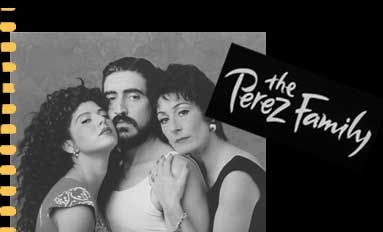
Non-Latins do no better if we use The Perez Family (1995) as a sorry example. Directed by the Indian filmmaker Mira Nair (Salaam Bombay, 1988, Mississippi Masala, 1991, and Monsoon Wedding, 2001), it starred the generally respected actress Marisa Tomei as a caricaturish Cuban whore caught up in the Mariel boatlift of the late 1970s. Other miscast actors in the film were Anjelica Huston and Alfred Molina in an ill-conceived effort to make a comedy out of the Mariel boatlift, a serious and tragic event to many Cubans and Cuban-Americans.
An honorable exception to the generally underwhelming attempts of Americans to make films about Latin themes is Before Night Falls (2000), written and directed by the artist Julian Schnabel (Basquiat, 1996) and starring the Spanish actor Javier Bardem. Although occasionally beset by linguistic confusion (switching between English and Spanish for no apparent reason), this highly regarded film is a sensitive and powerful portrayal of the homosexual Cuban poet Reynaldo Arenas. But then this independent film would not qualify as either a Hollywood or Latino production.
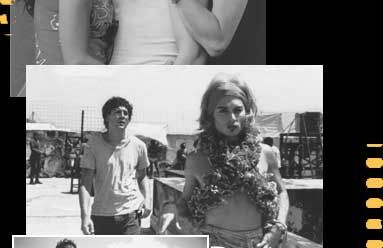
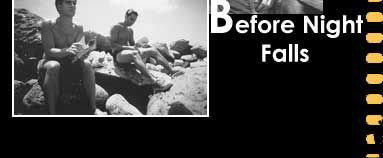
Typical of the confusion this topic generates is a recent New York Times article on Latin American films.18 It discussed Argentine, Cuban, and Mexican films and the difficulty they have in being distributed in the United States, a distribution that is limited to art houses where they have to compete with French, Italian, Spanish, Japanese, Chinese, Taiwanese, Iranian, and American independent films. The article eventually made the obligatory statement that "the huge growth of the Latino population is a beacon of hope." But it did quote Daniel Talbot, president of New Yorker Films, who noted realistically that "Latinos in the United States are hardly a guaranteed audience for Latin American films. The public for these films, he said, is drawn from the same limited pool that goes to any foreign movie; an ethnically mixed group of slightly older, reasonably well-traveled, college-educated people. Although interest varies film by film, he said, 'these are subtitled films that reach a minority audience.' "
Gerardo Tort, whose film De la calle (2002) has won awards in Mexico and Spain, expressed his own reservations about the Latino audience in the United States: "This is a very complicated market, and the Hispanics or descendants of Hispanics who live here perhaps do not want to hear precisely about this type of story, perhaps because they have fled from this type of situation."19 Tort was referring to his own film, screened at the Los Angeles International Latino Film Festival, which depicts the plight of street children in Mexico City, much like Luis Buñuel's classic Los olvidados did in 1950.
However, the article goes on to quote Moctesuma Esparza, producer of Selena, Price of Glory, The Milagro Beanfield War20 and other Latin-theme movies, to the effect that Latin American movies "must be marketed to Latinos and made accessible in Latino neighborhoods." He ignores the fact that few such neighborhoods have movie theaters and that film distribution in the U.S. relies on centrally located multi-screen theater complexes. Leon Ichaso makes an even more astounding statement: "…it is up to Latinos and Latin Americans to coalesce so they can finance and distribute their films and develop the market themselves."21This is something like saying that in the late 1940s and 1950s, the films of Roberto Rossellini, Vittorio de Sica, and Federico Fellini should have been marketed primarily to Italian-American neighborhoods and "coalesced" with Hollywood films made by Italian-surnamed directors. This is a palpably ridiculous idea, but it is still too readily applied to Latin American and sometimes even Spanish films vis-à-vis American Latin-theme movies.
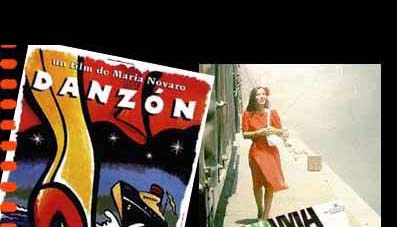
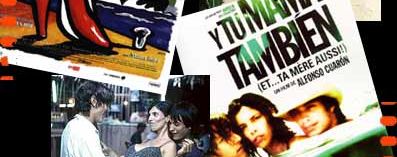
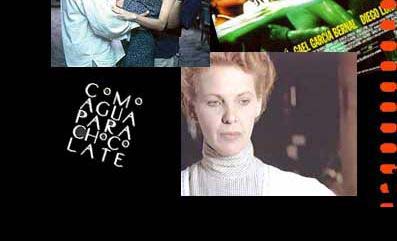
If Moctesuma Esparsa and Leon Ichaso happen to be thinking of the way Mexican films were distributed in the 1940s through the 1960s, they ignore the significant demographic, technological, and cultural changes since that time. The Mexican-Americans and Puerto Ricans of that time were more receptive to movies in Spanish. This was long before the advent of U.S. Spanish-language television (Univision and Telemundo) and video rental stores, which have largely eliminated movie theaters that show Spanish-language films.22 Besides the U.S. Hispanic population is now much more diversified in its national origins and cultural and linguistic levels. Many speak little or no Spanish while, at the other extreme, others barely have a grasp of English.
Mexican films such as Arau's Como agua para chocolate (1992), María Novaro's Danzón (1991), Alejandro González Iñárritu's Amores perros (2000), and Alfonso Cuarón's Y tu mamá también (2001) have been successful in the international and U.S. markets, not because they were directed to a particular and nebulous segment of the population but because they entertained, appealed to, and stirred the emotions of audiences throughout the United States and the world.
